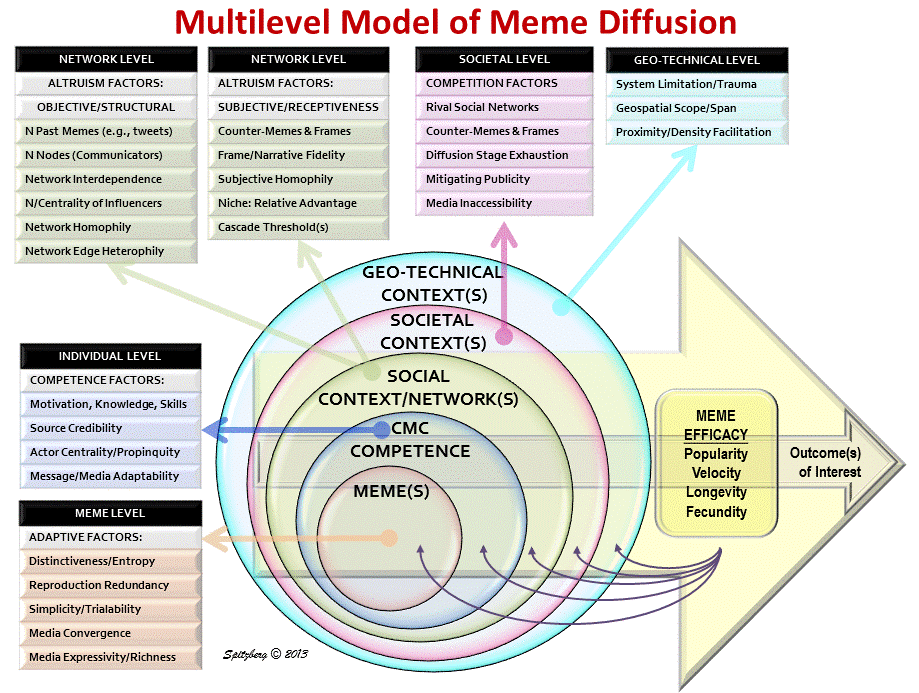We introduced the multilevel model of meme diffusion (M3D) theory with 30 separate variables that either (a) facilitate or impede a meme’s competitiveness, or (b) facilitate or impede a context’s competitiveness to resist or accept that meme. The most central axiom of the model follows from the evolutionary premises of Dawkins (1976) who conceptualized the meme as an analogue of the gene, and Willson & Wilson’s (2007) summary of group-level selection theory. The axiom is that selfish features of memes (i.e., features that facilitate the meme’s adaptive fitness or survival value) compete against the group-level factors that compete against new speciation of memes (e.g., the competition for information space in a given communicative ecological niche). Both proposed scenarios (public response to disaster warnings and the debates of socio-political referenda) are dependent, at their cores, on the propagation and cohesion of messages.These messages will take various forms, and the most successful of these messages, those that are reproduced and that spawn other messages, are known as memes.

The multilevel model of meme diffusion (M3D) theory with 30 separate variables and six context levels.
A theory that predicts how memes work, diffuse, and successfully endure and evolve into new memes will facilitate the focus of investigations into risk and disaster communication environments and political and social movement contexts. There are therefore dozens of hypotheses that can guide data collection, and guide retrospective interpretation of exploratory data. For example, is redundancy of risk and warning messages more important than the network centrality of the source of the messages? Both are predicted by the model to influence meme success. Is there linguistic evidence that certain risk and warning language (e.g., low fear appeal vs. high fear appeal, gain frame or loss frame) diffuse more rapidly and enduringly due to their resonance in the social networks into which they are introduced? These are all questions the M3D model specifically directs the researcher to investigate, and are practical within the tools currently available to the research team.
